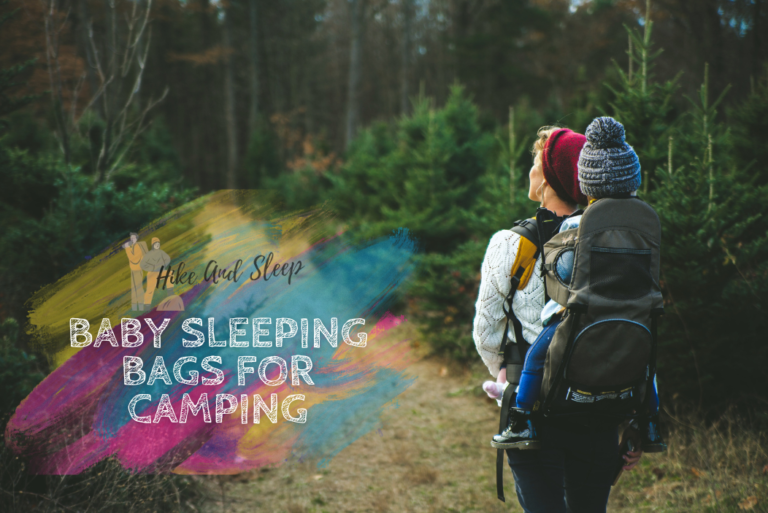Quilts vs Sleeping Bag: Which Is the Best Camping Bedding?
In the world of outdoor gear, the choice between quilts vs sleeping bags is akin to deciding between a swift, graceful dancer and a steadfast, reliable partner. Both offer unique advantages and understanding their differences is essential for those who seek the freedom to explore the great outdoors unhindered. Some people also often wonder if the quilt or sleeping bags are even needed on an outdoor trip.
From weight and comfort to versatility and insulation, this article will delve into the intricacies of these two sleep systems, allowing you to make an informed decision that suits your individual needs.
Table of Contents
- 1 Key Takeaways: Quilts Vs Sleeping Bags
- 2 Weight: Comparing the Weight of Quilts and Sleeping Bags
- 3 Comfort: Evaluating the Comfort Levels of Quilts and Sleeping Bags
- 4 Versatility: Exploring the Versatility of Quilts and Sleeping Bags
- 5 Insulation: Analyzing the Insulation Capabilities of Quilts and Sleeping Bags
- 6 Cost: Considering the Cost Factors of Quilts vs Sleeping Bags
- 7 Conclusion
Key Takeaways: Quilts Vs Sleeping Bags
- Quilts are lighter and more compact than sleeping bags, making them popular among ultralight backpackers.
- Quilts provide more freedom of movement and versatility in temperature regulation, offering a more comfortable camping experience.
- Sleeping bags provide a more enclosed and secure feeling and excel in extreme temperatures, providing warmth and protection against cold winds.
- Quilts tend to be more budget-friendly and can be made at home while sleeping bags often have additional features and are generally more durable.
Weight: Comparing the Weight of Quilts and Sleeping Bags
When comparing the weight of quilts and sleeping bags, there are several factors to consider. Weight is an important consideration for individuals who desire freedom and mobility during their outdoor adventures.
Both quilts and sleeping bags have their own advantages and disadvantages in terms of weight comparison.
Quilts are generally lighter than sleeping bags, making them a popular choice among ultralight backpackers and hikers. The absence of a zipper and insulation on the back allows quilts to be lighter. However, it is important to note that quilts may not provide the same level of warmth as sleeping bags, especially in colder temperatures.
Sleeping bags, on the other hand, tend to be heavier due to the added insulation and the presence of zippers. This extra weight can be a disadvantage for those who prioritize a lightweight pack. However, sleeping bags offer better temperature regulation and are more suitable for colder climates. The insulation surrounds the entire body, providing superior warmth and protection from the elements.
Ultimately, the choice between a quilt and a sleeping bag depends on the individual’s needs and preferences. Those who prioritize weight and freedom of movement may opt for a quilt, while others who prioritize warmth and temperature regulation may prefer a sleeping bag.
It is important to carefully consider these factors when making a decision for your outdoor adventures.
Comfort: Evaluating the Comfort Levels of Quilts and Sleeping Bags
Undoubtedly, comfort is an essential aspect to consider when comparing the comfort levels of quilts and sleeping bags. Both options offer unique features that can greatly impact a person’s sleeping experience. Here are some key factors to evaluate when considering the comfort levels of quilts and sleeping bags:
- Freedom of movement: Quilts often provide more freedom to move and adjust positions during sleep, allowing for a more unrestricted and comfortable experience.
- Temperature regulation: Comparing temperature regulation between quilts and sleeping bags is crucial. Quilts offer more versatility as they can be easily adjusted to accommodate different temperature conditions, while sleeping bags may have limited temperature control options.
- Weight: The weight of a sleeping system can affect overall comfort, especially for those who prioritize mobility. Quilts tend to be lighter than traditional sleeping bags, providing a more comfortable and effortless camping experience.
- Evaluating durability: When it comes to comfort, durability plays a significant role. Assessing the longevity of both quilts and sleeping bags is essential to ensure prolonged comfort and satisfaction.
- Customizability: Quilts often offer customizable features, such as detachable footboxes and adjustable straps, allowing users to tailor their sleeping experience to their specific comfort preferences.
Read Also:
Versatility: Exploring the Versatility of Quilts and Sleeping Bags
Interestingly, both quilts and sleeping bags offer a remarkable level of versatility, making them suitable for various outdoor activities and weather conditions.
When it comes to camping and backpacking, both options have their advantages. Quilts tend to be lighter and more compact, making them ideal for backpackers who prioritize weight savings. They are also easier to pack and unpack, allowing for quick setup and teardown. On the other hand, sleeping bags provide a more enclosed and secure feeling, which can be comforting to some campers. They also tend to be more insulated, making them suitable for colder climates.
In terms of climate compatibility, quilts and sleeping bags have their own strengths. Quilts offer better temperature regulation, allowing users to easily adjust their coverage based on the weather. This makes them suitable for both warm and cool conditions. Sleeping bags, on the other hand, excel in extreme temperatures.
They provide a cocoon-like environment that traps body heat, keeping campers warm in frigid conditions. Additionally, sleeping bags often come with hoods and draft collars, providing extra protection against cold winds.
Insulation: Analyzing the Insulation Capabilities of Quilts and Sleeping Bags
The insulation capabilities of quilts and sleeping bags vary significantly, affecting their ability to retain body heat and provide warmth during outdoor activities. When it comes to insulation, there are a few key factors to consider:
- Temperature Range: Quilts and sleeping bags both offer insulation, but their temperature ranges can differ. Quilts are typically designed for warmer conditions, making them ideal for summer or mild weather camping. Sleeping bags, on the other hand, come in various temperature ratings, allowing you to choose the level of insulation you need for colder temperatures.
- Packability: Quilts are known for their lightweight and compact design, making them highly packable. They can be easily compressed and take up minimal space in your backpack. Sleeping bags, although bulkier, often come with compression sacks that help reduce their size for easier transportation.
- Versatility: Quilts provide more freedom of movement compared to sleeping bags, allowing you to adjust and regulate your body temperature as needed. They can be used as a blanket or folded up like a traditional sleeping bag. Sleeping bags, while less versatile, offer a cocoon-like experience that some campers find comforting.
- Insulation Material: Both quilts and sleeping bags can be insulated with a range of materials, including down and synthetic insulation. Down insulation provides an excellent warmth-to-weight ratio, while synthetic insulation is more resistant to moisture and dries quickly.
- Personal Preference: Ultimately, the choice between a quilt and a sleeping bag depends on personal preference and the specific needs of your outdoor adventure. Consider factors such as temperature range, packability, and versatility to determine which option will best suit your freedom-seeking lifestyle.
Cost: Considering the Cost Factors of Quilts vs Sleeping Bags
Taking into account the various cost factors, it is important to compare the prices of quilts and sleeping bags when deciding which option is more financially feasible for your outdoor adventures. While quilts and sleeping bags both serve the purpose of providing warmth and comfort during camping trips, their cost can vary significantly.
A cost comparison between quilts and sleeping bags reveals that quilts tend to be more budget-friendly. This is mainly because quilts are simpler in design and construction compared to sleeping bags, which often include additional features such as zippers and hoods. Additionally, quilts can be made at home by sewing enthusiasts, further reducing their cost.
However, it is essential to consider the durability analysis when evaluating the cost factor. Sleeping bags are generally more durable than quilts due to their construction and materials. The synthetic or down insulation used in sleeping bags provides better resistance against wear and tear, making them last longer. On the other hand, quilts may require more frequent repairs or replacements over time.
To better understand the cost comparison and durability analysis of quilts and sleeping bags, refer to the table below:
| Cost Factors | Quilts | Sleeping Bags |
|---|---|---|
| Initial Cost | Lower | Higher |
| Durability | Lower | Higher |
| Repair Costs | Higher | Lower |
| Longevity | Lower | Higher |
Conclusion
In conclusion, when comparing quilts vs sleeping bags, it is evident that both options have their advantages and disadvantages.
Quilts tend to be lighter and more versatile while sleeping bags provide better insulation and comfort.
The choice ultimately depends on individual preferences and specific needs. Consideration of weight, comfort, versatility, insulation, and cost factors is crucial in making an informed decision.







